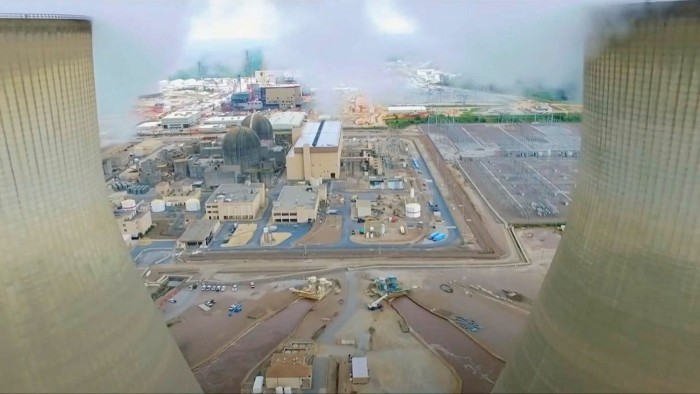Westinghouse is in talks with US officials and industry partners about deploying 10 large nuclear reactors to meet the goals of President Donald Trump’s executive orders, which aim to unleash an American atomic energy renaissance.
The Pennsylvania-based nuclear developer is one of a handful of western companies capable of designing and building large reactors, which typically have capacity to generate about 1,000MW of electricity, enough to power more than 500,000 homes.
The orders, which were published on May 23, set targets for quadrupling nuclear energy capacity in the US by 2050, starting work on 10 large reactors by 2030 and accelerating regulatory approvals.
They have sparked a rush among developers and utilities to fast-track plans, as they seek to tap into billions of dollars of federal incentives expected to be provided by the administration.
The orders have also propelled nuclear energy stocks to record highs this month in anticipation of a US construction boom.
Dan Sumner, Westinghouse interim chief executive, said the company was “uniquely positioned” to deliver the president’s agenda because it had an approved reactor design, a viable supply chain and recent experience of building two of its AP1000 reactors in Georgia.
“There is active engagement with the administration, including key points of interface with the loan programmes office, recognising the importance of financing to the deployment of the model,” he said in an interview.
“There are 10 large nuclear reactors in the executive order and we believe that we can do them all with AP1000 reactors . . . Our customers, the hyperscalers, the tech firms, the suppliers are all coming together to try to figure out exactly how to deploy.”
Based on estimates from the Department of Energy, building 10 large nuclear reactors in the US could cost $75bn without accounting for delays or cost overruns, according to TD Cowen, an investment bank.
Westinghouse, which is jointly owned by private equity group Brookfield and uranium miner Cameco, has enjoyed success with its AP1000 reactor, a pressurised water reactor operating at several locations in the US and China.
At least a dozen additional plants are either in construction or under contract in Poland, China, Ukraine and Bulgaria.
Westinghouse faces limited competition in the US market as global industry leaders, including Russia’s Rosatom and China General Nuclear Power Group are unlikely to win contracts due to geopolitical factors.
GE Vernova, which has a joint venture with Hitachi, has not built a large reactor in decades in the US and has shifted its focus to small modular reactors (SMRs), a new type of reactor design that generates about a third or less of the power capacity of standard units.

Korea’s Kepco has a US approved reactor design but has never built a large-scale reactor in the country, say analysts, and France’s EDF withdrew from the US nuclear reactor market almost a decade ago.
Adam Stein, a nuclear expert at the Breakthrough Institute, a Washington-based group, said the limited number of US approved designs was a boost to Westinghouse but he added that building 10 large reactors was very ambitious and challenging.
“The US doesn’t have the most favourable market for building large new nuclear right now because of the type of the electricity market that doesn’t guarantee cost recovery in most cases,” he said.
“The executive order is not a direct mandate. It’s still a decision for the local utility to invest in new reactors and a state’s Public Utility Commission to consider that cost to the ratepayers. That makes it challenging to build large reactors right now.”
Delays in the construction of two AP1000 reactors at Georgia’s Vogtle nuclear power plant in recent years caused costs to more than double beyond their initial $14bn estimate, dimming US utilities’ enthusiasm for large reactors.
Sumner said the first-of-a-kind construction challenges with the AP1000 in Georgia had been solved due to learning from deployments in the US and China.
“The design is frozen . . . We are the only firm in the world that has done modular nuclear construction and we have all of [that] real life learning now embedded in our go forward delivery models.”
But it is not clear if utilities and tech groups, such as Microsoft, Google and Amazon, are prepared to invest tens of billions of dollars to jump start construction of large scale nuclear plants in the US.
SMR developers are talking to US officials and utilities about co-locating multiple reactors on a single site to provide similar generation capacity, which they claim will reduce construction risks.
NuScale, which has an SMR design approved by US regulators, told the Financial Times it could deploy 12 of its 77MWe (megawatt electrical) reactor modules to support a plant with 924MW of capacity.
Kelly Trice, president of Holtec International, an US-based SMR developer, said grouping two or three of its 320MWe reactors together would enable it to compete against any large-scale nuclear plant.
“We think we can do the same for less costs, for fewer people, to operate, less maintenance and simpler. So, we fully intend to compete with the big plants,” he said.

